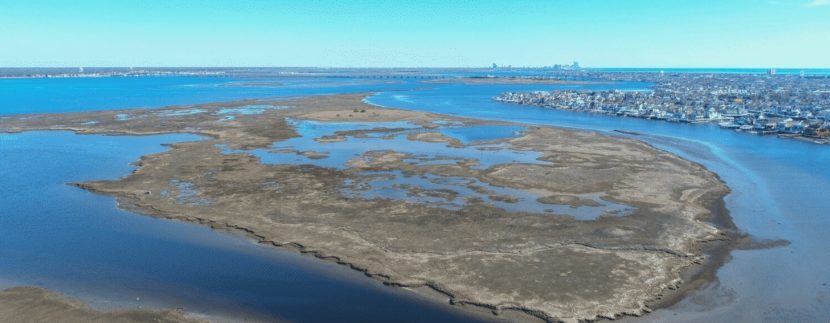Shooting Island Restoration Project to Enter Next Phase

By MADDY VITALE
A living shoreline that will help protect Ocean City from coastal storms and sea level rise is the longest of its kind in the state. In 2019, the first phase of the flood resiliency project to restore the 100-plus-acre Shooting Island was completed. And now, steps are underway to make phases 2 and 3 happen.
During a recent City Council meeting, ACT Engineers, the city’s environmental consultant, was awarded a professional services contract not to exceed $25,000 to help facilitate permitting for the next phases of the project, according to the resolution.
Eric Rosina, president of ACT Engineers, and Junetta N. Dix, director of Environmental Services for the Robbinsville-based company, sent a memo to City Business Administrator George Savastano outlining the importance of the restoration project and how ACT will continue to assist in the process by working with federal agencies in the permitting process.
“The project was designed in phases and includes the living shoreline to reestablish the historic shoreline of the island, backfill behind the silt, and beneficial reuse of dredge material to raise the marsh plain,” Rosina and Dix wrote in the memo.
ACT representatives continued, “Modeling has confirmed, in the absence of any action, Shooting Island will eventually be lost to sea level rise and marsh subsidence. Bay islands such as the 100 acre-plus Shooting Island serve a vital role in flood storage and wave attenuation during storm events.”
Video courtesy of The Drone Life
For the past few years city officials and ACT representatives have spoken about the importance of restoring Shooting Island.
“The mayor (Jay Gillian) is grateful to the state Department of Environmental Protection, the National Fish and Wildlife Foundation, the National Marine Fisheries Service and the U.S. Army Corps of Engineers for their partnership and financial support in this groundbreaking project,” said Ocean City Public Information Officer Doug Bergen in a statement during phase 1 of the project.
He continued, “If all goes well, the new living shoreline should provide both a buffer against storms and a habitat for birds and marine life.”
Specifically, the living shoreline creates a buffer from storms on the bayfront and helps restore wetlands. Phases 2 and 3 of the restoration project include filling in between the rock sill and the oyster habitats, applying dredge materials and restoring and recreating the wetlands using some dredge materials.
The first phase entailed the installation of 2,700 linear feet of rock sill to protect existing marsh and allow for further development of marsh on the island; and 1,450 linear feet of oyster habitat along the northern and western edges of the island. The oyster “castles” are manmade block-like structures, like Legos, that provide the ideal habitat for shellfish, according to Ocean City officials.
The sill functions as protection for the Shooting Island wetlands and will absorb energy from the waves and currents. The oyster habitat blocks were spaced to promote the flow of tidal water between the marsh and bay, officials said.
Since 1978, Shooting Island, which is off Tennessee Avenue and is uninhabited, has seen significant degradation. Its shoreline has receded nearly 60 feet. With the project, more than 150 acres of tidal wetlands will be restored.
If there was nothing done, ACT representatives maintain that Shooting Island would be gone by 2100.
The permitting for the project is issued to Ocean City in partnership with the U.S. Army Corps of Engineers, N.J Department of Environmental Protection, U.S. Department of Interior, National Fish and Wildlife Foundation and National Marine Fisheries Service.

The first phase includes this rock sill to protect existing marsh. (Photo courtesy of ACT Engineers)


